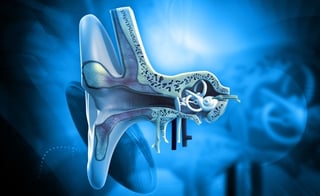Hearing impairment is emerging as a major health issue amongst people across the globe. Of the several reasons that lead to this problem, the damage to the eardrum is one of the most prominent causes. Thankfully, the damage can be rectified almost completely or at least by a significant margin with the help of Tympanoplasty.

Reasons that might require Tympanoplasty
Tympanoplasty is performed to improve the hearing ability and protect the middle and inner ear function in several situation
- One of the biggest reasons to do tympanoplasty is the perforation of the eardrum. The eardrum is a three layered oval shaped structure that helps in transforming the sound waves into vibrations which can then be picked up by the bones in the middle ear. In addition, the ear drum acts as a protective membrane for the middle ear from any debris or bacteria entering the ear canal.
- Tympanosclerosis: Calcium deposits within the Ear
- Another major reason for performing tympanoplasty is the development of calcium deposits within the middle ear. These might result in blocking the sound transmission from reaching the middle ear and hence reduce the hearing ability of such individuals.
- The tympanoplasty surgery is done to remove these calcium deposits and clear any blockage within the ear.
- Retraction Pocket Defect:
- The retraction pocket defect is caused when a part of the eardrum changes its position to lie deeper within the air. The retracted part is referred to as the retraction pocket.
- The tympanoplasty surgery helps in restoring the retraction pocket to its normal position and preventing hearing impairment amongst the patients.
Apart from being worried about the risks associated with the procedure most patients also want to know how long does it take to heal after tympanoplasty? This generally depends on the type of procedure and the procedure aftercare received by the patients and various other factors affecting recovery.
Topic: ENT




.jpg)
.jpg)



Leave a comment